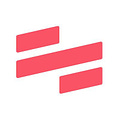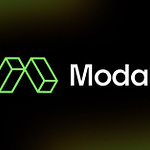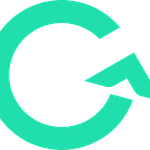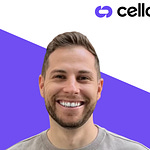Finally, podcasts transcripts are here! The one below is lightly edited for readability. I’m working on finding a more efficient way to condense transcripts into key points, in line with past written fireside chats that I’ve published, but I think this will still help folks who prefer to read vs. listen. Enjoy!
If you're trying to drive Talent Efficiency at your company, you're probably wondering, how can I help my organization make the best use of every hour on the job? One way to do this is to help your more experienced team members get the newer ones up to speed. But your experienced folks are usually especially tight on time, in part because everyone is asking them for help. How can we help our more knowledgeable team members scale?
I spoke with Jennifer Smith, founder & CEO of Scribe, about this very question. We discussed:
How do you mitigate the risk to your company know-how from your most knowledgeable team members quitting
How to quickly onboard new team members
How to leverage your institutional memory to train customers
I hope you enjoy this conversation as much as I did, and feel free to reach out to me with any thoughts. Let's dive in!
You can also learn more about Jennifer’s recommendations for employee onboarding here. And, as mentioned, you can check out the transcript of our conversation, below the Leadership Roles section.
If you’d like to hear more about topics related to scaling SaaS and Web3 businesses, you can subscribe to my newsletter (for free) here:
Leadership Roles
As always, I’ll share a few leadership roles at companies I’m excited about.
Head of Marketing @ Swantide
Workstream:
Head of Content Marketing (Utah or SF)
VendorPM:
Director of Engineering @ LaunchNotes
Product Marketing / Head of marketing (US/Europe) @ Palette
Marketing leader @ Guide
Transcript
Allison: Jennifer, I am so excited to have you on the podcast today. You are an incredible thought leader when it comes to how teams gather knowledge and how they share knowledge with customers — something that people are thinking about a lot nowadays as they're trying to hire quickly and retain folks. So, I'm really excited to have this conversation with you.
Jennifer: I'm so excited to sit down and chat.
A: To start off, I know you've given a lot of thought to how the know-how within a company is built and maintained. So, given how hard it is to retain people nowadays, I have to think a lot of founders are wondering, how do you mitigate the risk to your company know-how from your most knowledgeable team members quitting?
J: With the great resignation right now, you face a double whammy, which is number one, you've got people leaving, and it can be some of your your best people, your most tenured people who are walking out the door. And until you've hopefully got some new people coming in, where you got to figure out, oh, gosh, how do I onboard them really quickly, and transfer all this knowledge that’s left into their heads. And even before the great resignation, I talked to a lot of execs about this, and founders about this, who would say, look, my people are my most important asset. And really, it's the know-how that's in their head. That's my most important asset. All the special things they know how to do both generally, and in the context of my company and how it runs. And it walks out the door every day at 5pm. And I gotta hope that it comes back. And it's really hard for me to try to capture this knowledge, because you really only have two options, right? You either tell that person, Hey, before you leave, take time to write down what you knew how to do, that's a popular ask. Or, hey, I'll hire someone to come shadow you, or I'll ask a teammate to come sit next to you look over your shoulder and write down what you know how to do. By the way, I was at McKinsey for seven years, and I did way more of that work than I ever wanted.
At Scribe, we think a lot about, what if you could just pop open the heads of your most knowledgeable people and automatically pull out what they know how to do? What if you could build this collective know-how and capture all of this info, because that's really what your company is running on every single day. It's all of this special knowledge that people have.
A: The most knowledgeable people on your team are often really busy, because everyone is always asking them for help. This was often true at Gainsight on our customer success team. There were people who had been at the company for a while and had met with tons of customers. And they were often the go-to people for newer team members, but I often found it overwhelmed them. And so if they're spending their time helping other people, team members, customers, then they may not feel that they have the time to impart their knowledge in a more permanent, scalable way, as opposed to having these one-off conversations. So how do you cultivate this focus on enabling others more scalably?
J: This is something we hear a lot too, because we will talk to those people. And you can find that pretty quickly, within a company, everybody knows who they are. They'll say, oh, we really need to talk to Lauren. And then we talked to Lauren, and Lauren is incredibly knowledgeable, has usually been there for a few years, and is usually a pretty helpful person. She’ll say, I'm spending a lot of my time explaining to people how to do things. And so we think a lot about how can you pull that knowledge out of Lauren's head, but in a way that doesn't tax Lauren's time, because that's also a double whammy. If that person's your most productive person, their time's worth even more to you. And so we've said there really needs to be two key components and thinking about for us Scribe, which is what we use to pull that info out of someone's head is what it needs to be really high ROI for them. So it needs to be incredibly low friction, take very little of their time to do and they need to understand that there's a lot of value coming out of the other side for them doing it. And then to think about what are the positive feedback loops to that person as well that say, hey, you did this and it helps these people and here are the results coming out of it. And the key is to do that in a way that doesn't take them out of their flow of their day to day work. So, we think about how can we be capturing this know-how from Lauren, while Lauren's just doing what she normally was going to do when she showed up to work that day. And out of that, can you create scalable media that can now be shared not just with that one person that Lauren happens to talk to? Because they ping her to ask a question, but now with anyone who might have that question now or in the future.
A: A common question I hear from founders is, how do I quickly onboard new team members? So what are the best practices you're observing?
J: There's three components to it. There's kind of like the big piece of just helping new people understand the overall vision and mission of the company. What are your goals overall? What are your goals for the next quarter?
And then how does their work particularly tie into that? How are you viewing success within their role? What are the things that you're going to track and measure? So sort of the why behind, why are they here? And what are they doing?
And then I think the next piece, and this might be arguably the most important of the three, is the who. So, having someone feel like they're an integral part of the team and try to create that as quickly as possible. I think there's a lot of research around creating psychological safety and the importance of that within teams. And so how do you help people when they're first getting started to understand who are all the people that they're going to be working with, and help them build relationships with them?
There's been a lot written about this, we've got a bunch on our blog about this. But some common things that people will talk about are, in your first few days, make sure that you're bookending everyone's day — especially if they're remote — with a check-in. Hey, here's who you're gonna meet today, here are the kinds of things you might want to ask them, here's why they're important. And at the end of the day, how did it go? What did you learn? What are open questions that you have, and then making sure throughout those days that they're getting opportunities to talk to the right set of people in in both a formal and casual way. So, they're building those kinds of personal relationships.
And then the last piece is more tactical, making sure people have actually the resources, they need to feel like they can be successful at their jobs. This is an area where you see, I think it's really hard to do, and you see a lot of companies fall down. And so a recent Gallup poll that said that 29% of people in the US feel like they have the resources they need to succeed at their job after being onboarded. After companies have put all this effort into it. I think it's an area where we can do a lot more within Scribe, we think about that a lot of like, what does the know-how that people need when they show up to their jobs?
So okay, you've told me what I need to be doing. You've told me what the company is trying to do overall, and how that matches, you've told me who I'm going to be working with, you've maybe done some basic onboarding and training around the skill set required. I'm now butt-in-seat and I've got to open up my Salesforce and figure out where my opportunities lie. Or I've got to generate my marketing report. How do I do these really tactical things? And when you're sitting together in person, you'll often see people just pop their head over the proverbial cubicle or tap someone on the shoulder and say, hey, can you just show me how to do this? When we're remote, that becomes a lot harder and becomes again, a tax on your people who are now getting Slacks and Zooms and emails with people asking them how to do something, or I would argue even worse — people not asking at all and just sitting alone trying to onboard themselves and figuring out how to do something.
I think we often think about onboarding as being the first week or the first couple of weeks in a job. But I think we should really think of it as much longer, six to 12 months often, because there's a lot of parts of a job, especially in more established companies, where you only do it once a quarter or once a year. So, you're continually bumping up against what are these new things that I haven't done before? And how are you continuing to transfer that informal learning that happens peer to peer, but doing it in a way that's more accessible and more scalable for the new people coming in?
A: I have to imagine that in a remote environment where you're not seeing folks face-to-face as a new hire, it might be nerve-wracking to raise your hand and ask questions if you don't know something. What have you noticed in terms of the best practices for enabling team members in a remote environment, particularly keeping in mind that some subset of them might be particularly anxious? And then for candidates, what are you noticing are the best practices for them to make sure that they get up to speed quickly?
J: When you're in person, I think sometimes it can even be daunting to pop your head over and ask somebody. I remember starting some new jobs and not wanting to bother the person sitting next to me all the time, every time I had a question, and there were a lot of them. I think that barrier goes up even more when now you have to send a message to interrupt someone's day. And so I think there's something teams can do on that side.
Again, I think creating a lot of these more like informal times where people can connect so they can even understand who are the people I could be asking questions of, because there's really three parts to it.
One, you have to understand you don't know something, which sounds trivial, but not always obvious. A lot of times people don't even realize they don't know.
Two, do I know where to go to get that info, whether it's a person or some kind of knowledge management platform that my company is using?
And then three, there actually has to be an answer within that.
McKinsey did a study recently that said, the average knowledge worker spends 20% of their time just trying to find info on how to do their job. This is not people who are just onboarded — this is even people who have been doing their job for a while. Like one out of every five days. And so how do you make it so that it's easier for people to be able to get that info and not be pinging others?
We think a lot about that concept of, what if instead of going and asking someone how to do something, you had it written down somewhere? What if it were just sort of seamlessly documented? And you could have this kind of like collective intelligence of your organization?
I think it's incumbent upon, to answer your question directly, the person who's coming in, to feel empowered to ask those questions. And I think this is something we try to do whenever new people join Scribe is say, if you have a question on something like you're not going to be the first one or the last one. Find that info. And because we're Scribe, we say create a Scribe. If you don't find the Scribe for what you're looking for, find the answer, and then create the Scribe so that the next person doesn't have to go through that same exercise. And we're trying to create something that's more scalable.
A: Maybe that's a good segue into your product. I think folks would probably love at this point, to understand a little bit more about what does Scribe do?
J: I tend to think of it as like tipping someone's head open and automatically capturing what they know how to do. Scribe's a way to just really easily share know-how, how-to knowledge. So procedural information.
Very tactically, the way that it works is it's a Chrome extension or a desktop application, you click the record button, and then you just do a normal process. You do the thing that you would have been doing at that time during your day anyways. And when you're done, you click stop record, and Scribe will auto-generate a step-by-step written guide with screenshots explaining what that process is, and how to do it. And you have a whole bunch of options for how you edit it. All the info someone would need to understand about how to do this process is automatically generated just from you doing that work.
You can imagine that's used in a variety of different contexts. Really anywhere that someone has to explain to someone how-to. So, hence a lot of your questions around onboarding any of the how-to within a company, how do I generate this report? How do I use this software? How do I find which days we have off? All that kind of stuff that you have every day, you accumulate Scribes of more and more, as everyone goes to then generate one of those reports, they just click that record button, and boom, now you have a Scribe on how to do it.
So, next time someone has a question, they're hopefully not Slacking you and asking you — they're going and finding it in your Scribe.
A: What were people doing in terms of creating scaled ways to share know-how before they had Scribe?
J: You see this today. There's no standard. It's very interesting to see what happens. It's any combination of folks hopping on a Zoom, often and having a one-on-one conversation, to folks having a one-on-one conversation over Slack or maybe in a private channel, to people asking questions over email, to my favorite — I'll see these really lengthy Google Docs or similar word processing document where people will literally copy-paste screenshots and write in text, and that takes hours or days of their time. And the difficulty with all of those is you can tell is, they're quite manual, they live in different places, and they become much less scalable.
We thought about what's the standard? Could you create a standard by which people share how-to? Because right now, if you had a question for me — hey, Jennifer, could you show me how to create a custom email domain — you have no idea what you're gonna get back. I could just pick up the phone and call you I can send you an email. There's so many different ways. And so we talked about Scribe as like, what if you just create that easy, standard way, so people didn't even have to think about it and didn't have to do the work?
A: What are the primary use cases that you're seeing for Scribe?
J: We see it anywhere someone has to explain to someone how to do something. We've actually tried to size up how many how-to moments are there in a given day around the world with 300 million knowledge workers. And if you assume the average one has like five to seven how-to moments in any given day, some are going to have a lot more than that. You're talking about billions of questions that are getting asked all the time around, how do I do something.
We see that show up most commonly in areas like internal operations teams. So I'm scaling my team. I'm onboarding a lot of new folks. Maybe I'm hiring subcontractors. Maybe I'm changing a process or I just adopted a new tool. And I needed to show everyone, Hey, how do you use this new tool in our process? How do we do quote-to-cash in this company? To external facing use cases to your customers or your communities. So sales and customer success, both instances where especially if you're a technology company, you have to show your customers or prospective customers, here's how you use our software. Here's how you troubleshoot some of the questions that you're asking. Here's how I can send you a personalized response to something that you wanted to learn how to do in your custom software. To more community-facing stuff. You'll find help centers that are powered on Scribe right now, where you're answering questions for community around how to do something. But really any of these like enabling moments where you have to show someone how to do a process and you want them to do it in a particular way so that they'll be successful.
A: I have to imagine that you're saving people a lot of time given the kind of manual processes that they were using earlier to try to replicate Scribe in a way or substitute for not having Scribe. Have you quantified how much time you're saving folks?
J: It's an interesting question. Our users have quantified it. So we get messages from folks who will say, I used to spend about five or six hours creating this documentation. I'd create these whole manuals, and they’ll show us what they look like. And they'll say, with Scribe it took me five to 10 minutes. So, we're looking at orders of magnitude of time savings.
What's really energizing and exciting for us as process nerds is when we meet fellow process nerds who will drop us a note and say, oh, gosh, I'd been doing this before and I believed it was valuable enough that I was willing to spend a day a week of my life. I'm creating this every single week. And now I do it in less than an hour with you guys. Now I'm asking myself, what am I going to do with all this extra time that I just found?
As we think about future directions for our product, and one of the things we're building out in response to requests from folks is, can you help me understand just how much time I saved because it's really exciting to me when I start to see adding up what that was worth? And then of course, there's the top line benefits as well. I think it's really easy for us to focus on what is the time that people save when creating documentation. But really, the question is, what do I gain from sharing know-how better within a company, and what is it that you can unlock there?
The soapbox I like to get on is, you have all of this really valuable know-how and it exists within your team. And you're tapping into a tiny fraction of it right now. What if you could tap into the best of it and make it available to everyone? What could you do then with it?
A: I think what's so fascinating is, for so many functions across the classic tech organization, it used to be that they have to get access to tools that were supposed to improve their productivity through an ops team that they were working with, or through their manager. There was typically a top-down sales process. I know that you've pursued a more product-led growth strategy. So you're able to get directly to, for example, the customer-facing people who are looking to cut out manual work. Do you have any suggestions for those folks who decide to use Scribe, in terms of how to get the most value out of it?
J: That's a really important point, which is, I think software before, you used to think a lot about who's the buyer, and you design the features and the bells and whistles that the buyer is going to care a lot about. And we said, what are the things that make our end users successful and help make them shine? Because they're the ones who have figured out how to do valuable stuff? How do we make it easy for them to just share and get recognized for the valuable stuff they already know how to do?
One of the key things we designed for was how can we make this so that people use Scribe not because their boss is telling them to, but just because it makes their day a little easier and a little better and a little brighter. And so as we were iterating on the product, we were always looking at what is the end user? Regardless of where they sit within a company or who they are, whether they can swipe a credit card or not, it doesn't matter. It was really about how do you empower those people, because when you start to get a collection of people who are now using scribe or any tool, really that helps capture what they know how to do, because it's valuable to them. It accrues more value to the organization as well now. Because now as a company, oh, gosh, I have all of this know-how that now exists at the fingertips of everyone in my company. That's worth a lot to me. But I did that without having to force people to use this as a new mandate from above. It was because they individually saw value from it. So it creates these really powerful effects, where the overall company wins more, because now they have more and more of their processes that are being captured and scaled in the right way.
The thing that we tell people to get the most use out of it is anytime someone asks you how to do something, just send them a Scribe. Save yourself the Zoom, or the Slack or the email or whatever it was, you're gonna do. Just send them a Scribe. And then next time someone else asks you that question, send them that same Scribe, so you don't have to create it again. Or even better, just show them where they can go find it themselves. And if you have a question, and you don't find a Scribe for it, just create one. Because then next time someone has it, they can just find it there. It's all about finding what are these leverage moments in a way that just makes it so much easier for you in your day.
A: There are probably a lot of customer facing folks who are listening to this podcast — sales folks, customer success managers. Have you noticed certain points along the customer journey when sales and customer success folks tend to use Scribe the most?
J: It starts at the beginning of a sales conversation. So we'll say with Sales Ops, people who want to think about how to empower their salespeople, right as they're joining to onboard them or to roll out a new tool or whatever. And then with sales leaders or sales representatives, especially in technology companies. As they're having conversations with prospects, they'll say to us, I love sending them a Scribe to show some functionality that I think you might find really helpful. Or if they're going through and doing some kind of pilot or demo and saying, I thought this would be interesting to you. Having that personalized touch came from me to you where I'm quickly showing you how to do something. Salespeople say to us, that's incredibly powerful to me because it means that I'm helping that customer realize value or understand the value from our product so much faster, in a way that to them feels really high touch and concierge. But for me, it took me 34 seconds. And so there's some value in that.
Then obviously as prospects become customers and start using the product, from a success perspective, making sure that they're understanding the right way to be using it. This depends on your product and how complicated it is. But you can imagine even different tiers based on where your prospects or your customers are in their usage, from here's the basics of how to get started, to now that you've been going for a while, here's some special next-level unlocks for our power users.
What's been interesting to me is I imagined that we would see customer success and customer support folks using one-to-many. So we've created this help center library. We send the same things over and over again. What's been interesting for us to see is that customer success teams will continue to send one-to-one Scribes. One that they create just for that particular customer. Because the software is customized for them. So, maybe their portal looks a little different. So the generic help center stuff doesn't work. Or just for the personal touch, or it takes me a minute to create this, but it looks completely personal and configured. So it's worth it to us to spend that extra minute creating a new Scribe, just so that customer feels, Oh, my goodness, they took all this time to put this together just for me, it has my logo on it and looks like my environment. So it's been really interesting for us to see all the moments and ways in which people use it. But the fundamental core is, how do you help your customers be successful in understanding and realizing the value as fast as possible from your product? And so much of that is know-how.
A: How do you plan to evolve your product in the future?
J: Our vision and our mission is to grow the world sharing of how-to. We think a lot about how to continue to reduce the friction in creating that first Scribe capturing and sharing what you know how to do. We look at things like how long does it take people on average to create their first graph? We've gotten that down to 54 seconds. And we're how do we get that even shorter, taking it down to nearly zero? I don't need to think about it. It's almost just flowing out of my head. I'm not taking any extra time out of my day. Then, how do we make it easier for people to be able to discover and search and view and access Scribe content in the moment at the right place that they need it? So as you're going to do that piece of work, what if the right Scribe could come to you at that time? So you wouldn't even recognize almost that you had a question and think to go call someone else. Boom, it's automatically there. And then also that recognition piece as well, helping people understand you've done the hard part of knowing how to do something that's valuable. What kind of value have you created for your customers or your teammates or whomever and sharing that with them in a scalable way? I like continuing to see that value tick up over time, even without you doing anything additional because you create the documentation once and it can be shared many times.
A: Jennifer, thank you so much for joining us today. I learned so much, even beyond our conversations in the past. And I'm really excited for a lot of folks to improve the way that they share their knowledge and work with their customers through Scribe.
J: Thank you so much, Allison. I appreciate you letting me nerd out a little on processes with you.












